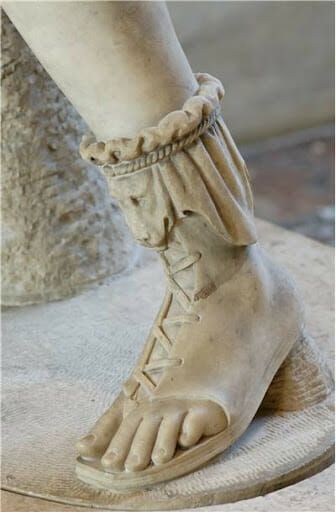EUCLID ALONE
By:
July 25, 2023
A series dedicated to poems, published c. 1900–1935, the Radium Age sf-adjacent themes of which include: dystopia and utopia, far-out mathematics and the fourth dimension, Afro-futurism, catastrophe, future war, new technologies, scientific breakthrough, dehumanization, cosmic awe, disenchantment and unseen forces, unknowable aliens and singularity. Research and selection by Joshua Glenn; thematic index here.

Euclid alone has looked on Beauty bare.
Let all who prate of Beauty hold their
peace,
And lay them prone upon the earth and
cease
To ponder on themselves, the while they
stare
At nothing, intricately drawn nowhere
In shapes of shifting lineage; let geese
Gabble and hiss, but heroes seek release
From dusty bondage into luminous air.
O blinding hour, O holy, terrible day,
When first the shaft into his vision shone
Of light anatomized! Euclid alone
Has looked on Beauty bare. Fortunate they
Who, though once only and then but far
away,
Have heard her massive sandal set on
stone.
— Section VI from “Eight Sonnets,” in the influential multio-author anthology American Poetry, 1922 (1922).
Millay was twenty-one when she enrolled in Vassar College as a freshman. Immersed in the strong science curriculum established there by pioneering astronomer Maria Mitchell, who had paved the way for women in science in the previous century, Millay composed one of her earliest sonnets as a tribute to Euclid’s legacy of revolutionizing how we look at the world and what we see. Geometry became for her a singular portal to truth and beauty.
Euclid was renowned (until quite recently) for his beautiful mathematical proofs, which the poet holds up as examples of “Beauty bare.” Just as in mathematics you can only have definite answers that are the same no matter how the problem is perceived, likewise, in bare Beauty, there is only one way of interpreting.
“Euclid’s system,” the mathematician Lillian Lieber, of whom Einstein was an admirer, wrote in z free-verse primer on mathematics and social justice, “has served for many centuries as a model for clear thinking, and has been and still is of the greatest value to the human race.”
Euclid was also a torchbearer of beauty. In fathering geometry with Euclid’s Elements, one of the most influential scientific texts of all time, he grounded mathematics in the real world — a groundbreaking cross-pollination of truth and beauty that shaped art through science and science through art. By giving rise to the development of perspective, Euclidean geometry invited architecture and the figurative arts into the three-dimensional world for the first time.
RADIUM AGE PROTO-SF POETRY: Stephen Spender’s THE PYLONS | George Sterling’s THE TESTIMONY OF THE SUNS | Archibald MacLeish’s EINSTEIN | Thomas Thornely’s THE ATOM | C.S. Lewis’s DYMER | Stephen Vincent Benét’s METROPOLITAN NIGHTMARE | Robert Frost’s FIRE AND ICE | Aldous Huxley’s FIFTH PHILOSOPHER’S SONG | Sara Teasdale’s “THERE WILL COME SOFT RAINS” | Edith Södergran’s ON FOOT I HAD TO… | Robert Graves’s WELSH INCIDENT | Nancy Cunard’s ZEPPELINS | D.H. Lawrence’s WELLSIAN FUTURES | & many more.
